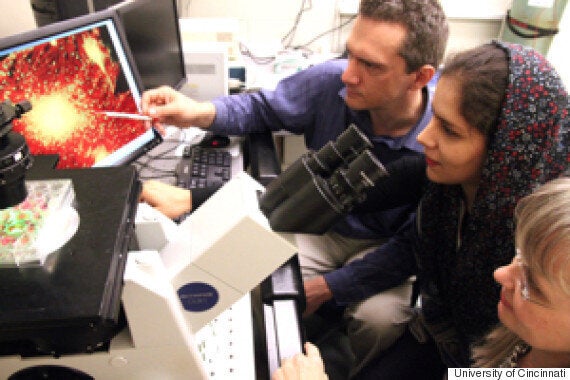Cincinnati scientists may have found a way to use electricity to help our bodies quickly heal from injury and wounds.
Their experiment works on the basis that all our bodies can respond to electric fields due to the presence of charged particles, ions, within our cells.
Andrei Kogan, associate professor of physics in the McMicken College of Arts and Sciences, and his team published a study in The Royal Society, which proposed that 'wireless applied electrical simulation' can be used to target 'injured and abnormal cells.'

Researchers have in the past tried to capitalise on this science but have never been able to maintain an optimal electric field due to a poor understanding of how externally applied electricity can effect the electric field within a cell.
Toloo Taghian who worked on the project said:
"Our findings demonstrate striking differences in cell responses between cells that are suspended in a medium (fluid) and cells attached to a dielectric substrate.”
READ MORE:
- How 3D Printing is Advancing Regenerative Medicine
- Paralysed Dachshund Jasper Walks Again Via Nose Cell Transplant, Offering Hope For Humans (VIDEO)
- Scientists Grow An Entire Limb In The Lab Using A Dead Rat
- Shaping the Future of Medicine: Why You Should Care About Tissue Engineered Organs
- How To Live Longer: Scientists Say The Secret To Reaching 100 Could Lie In Exercise And Diet
The Cincinnati team were able to 'guide cells' to a wounded area by applying an electric field from a device, which is still under a provisional patent, to a damaged part of the body.
Taghian says the process happens because the concentration of ions in an injured area of the body differs to parts of the body that are healthy, and therefore the electric field is able to create an 'ionic flow' that helps the body self-heal.
They also found that a cell responds differently to electricity based on its surrounding environment, which essentially means that scientists will be able to titrate how much electricity they apply to various cellular environments and can avoid overheating or harming cells.
The team claim their findings could revolutionise the way doctors treat chronic wounds in the future.